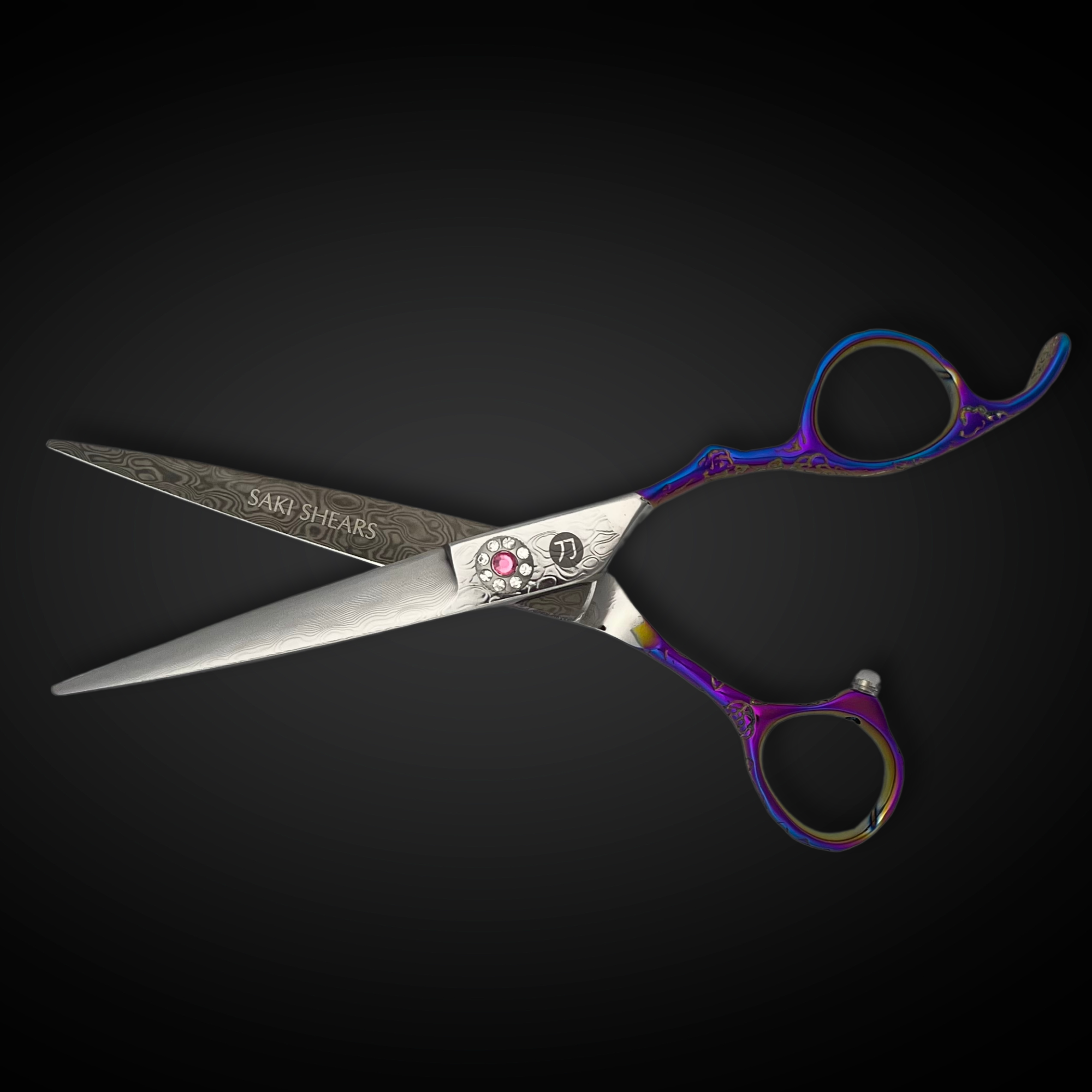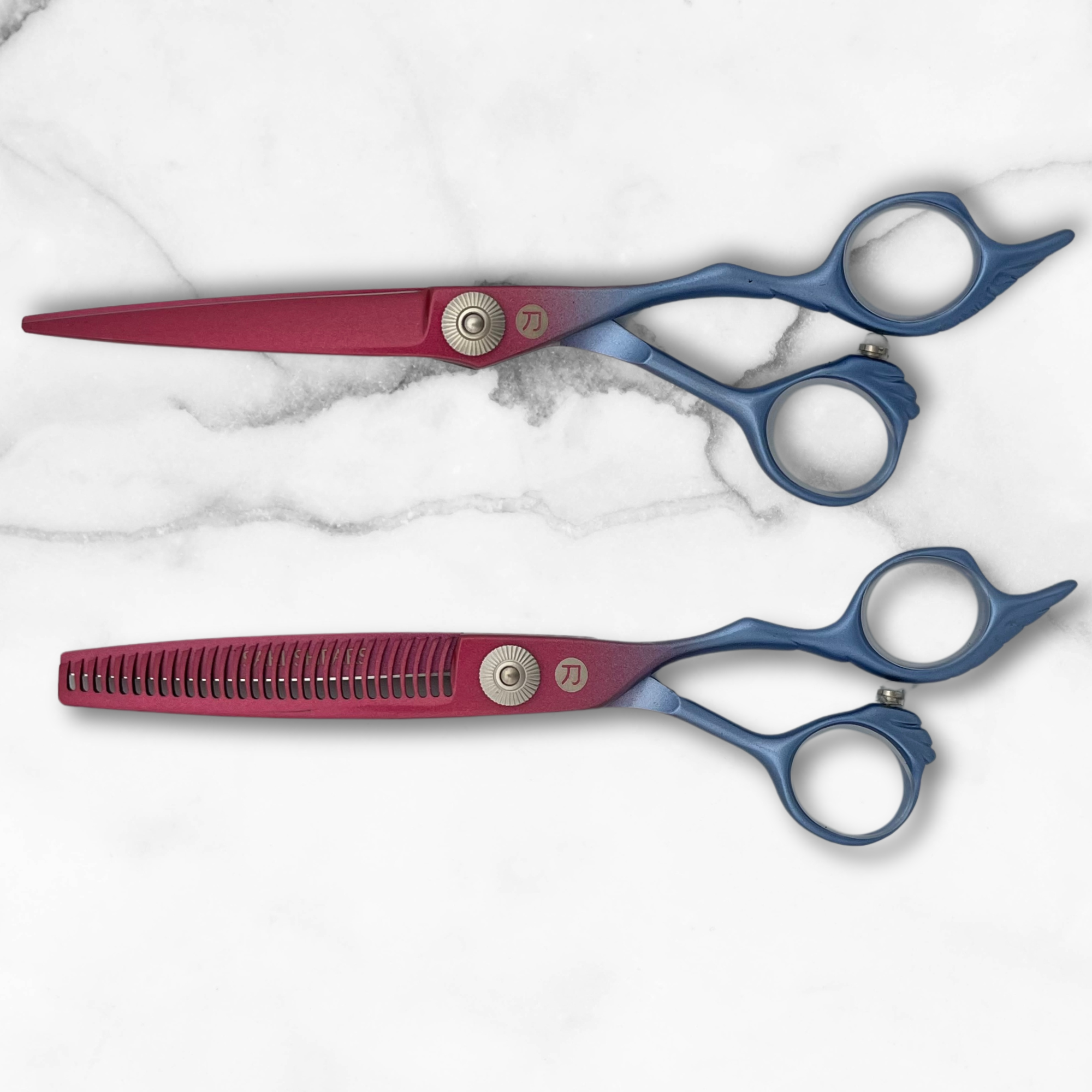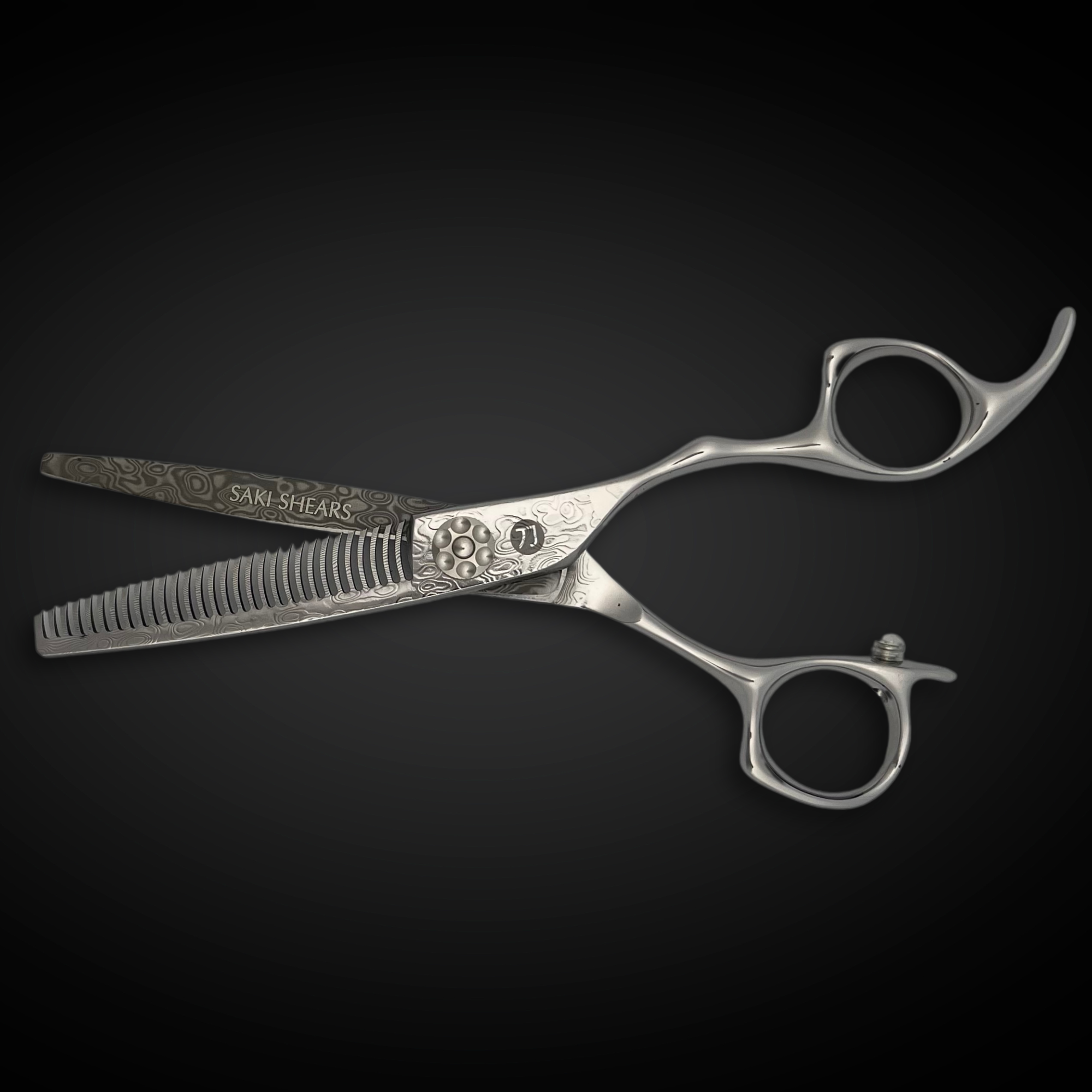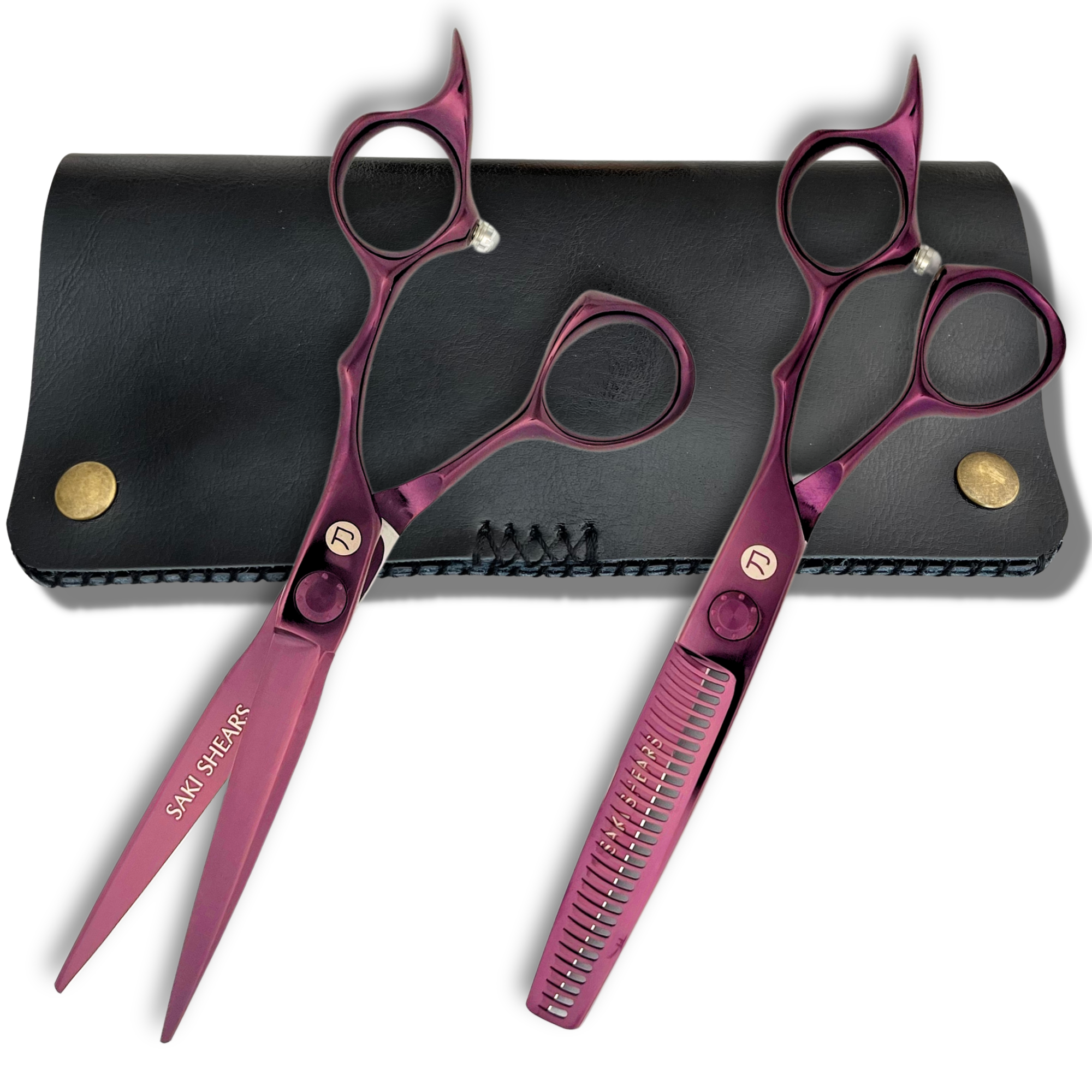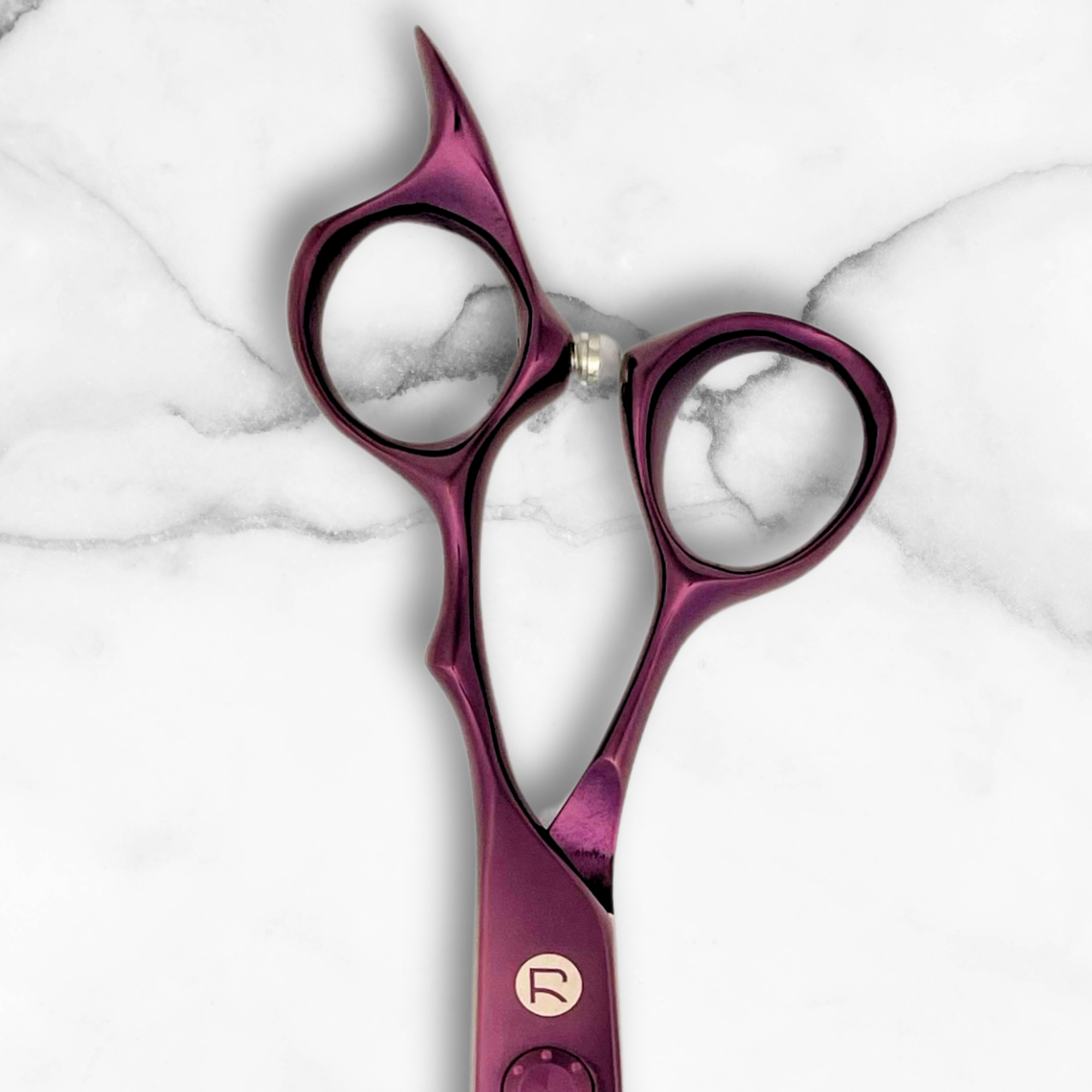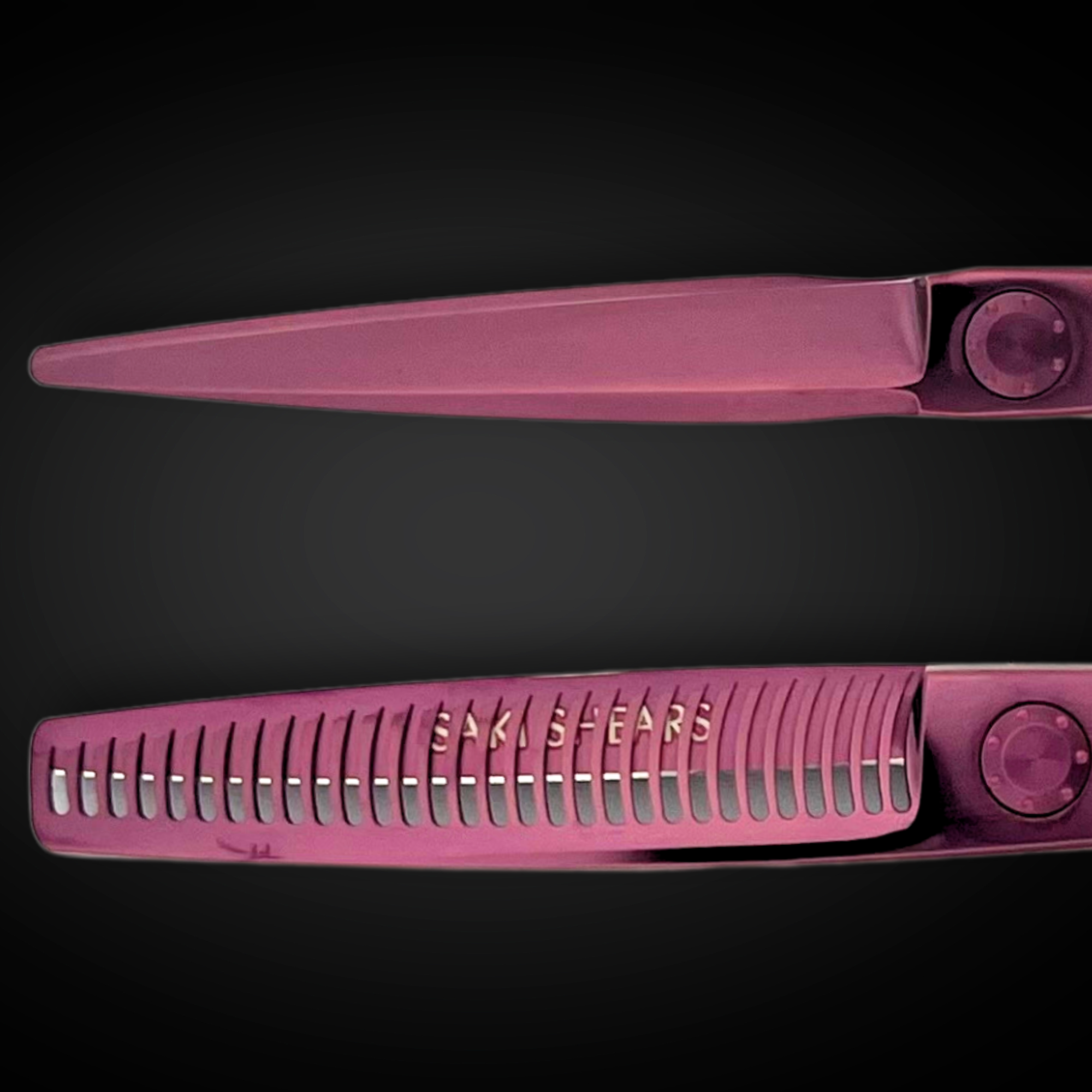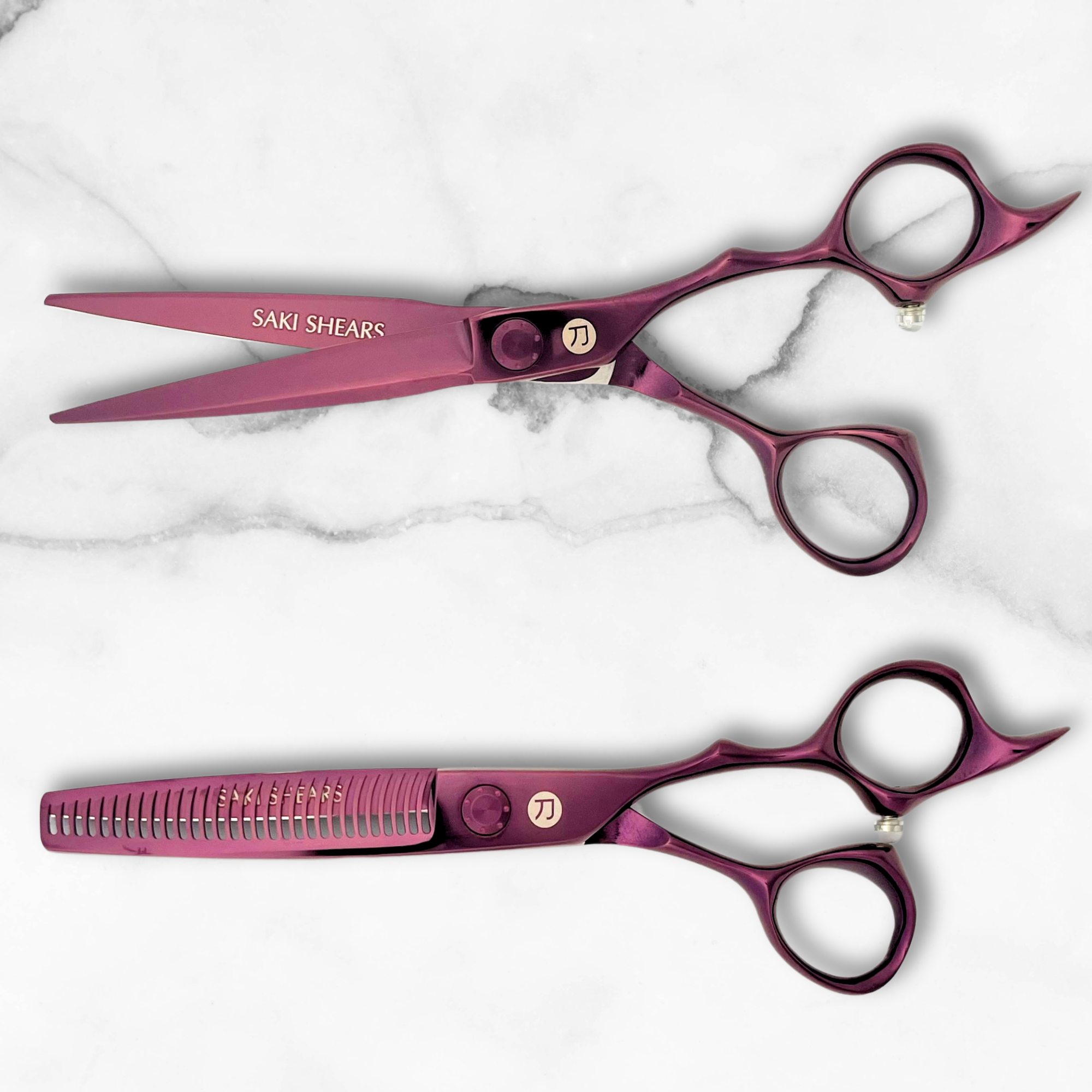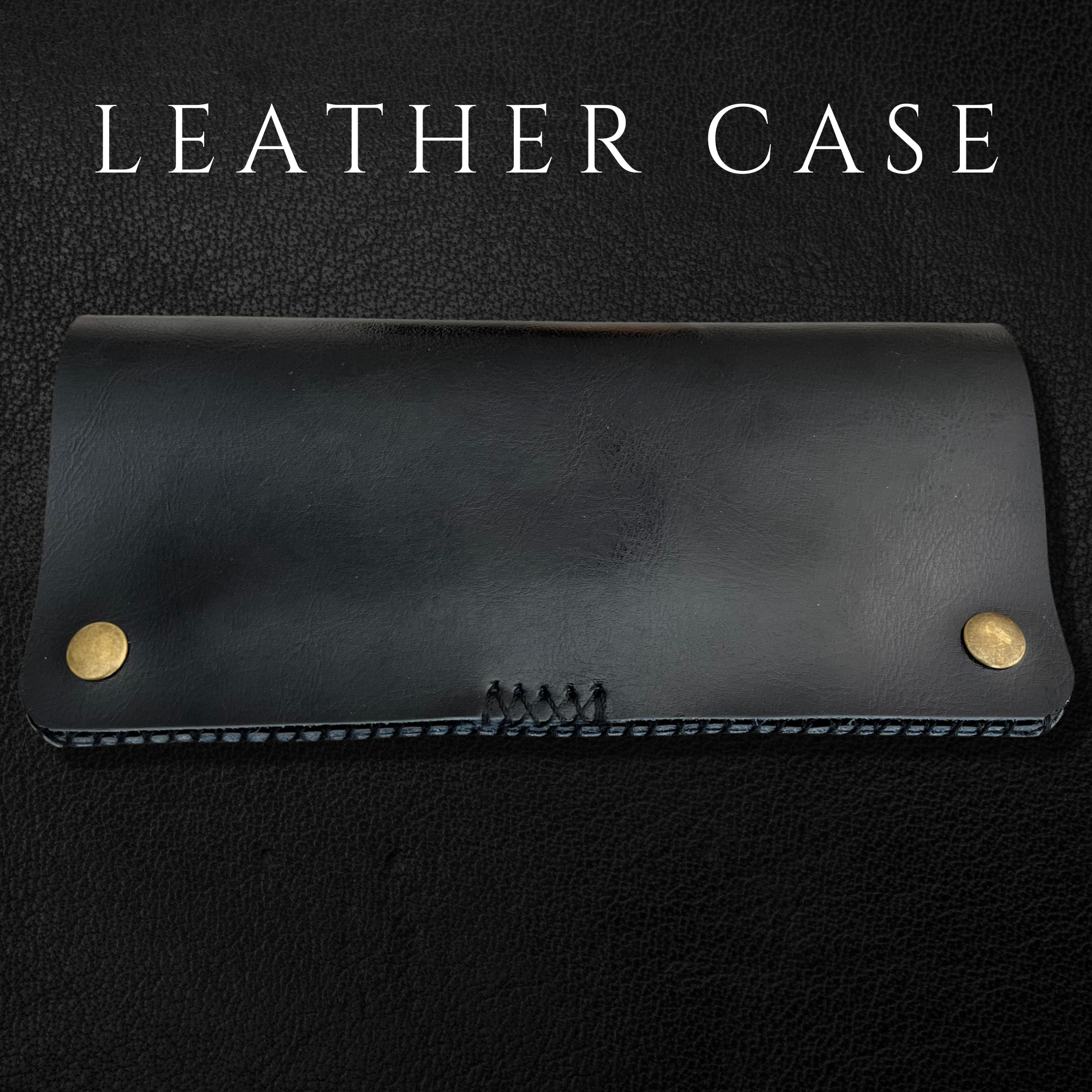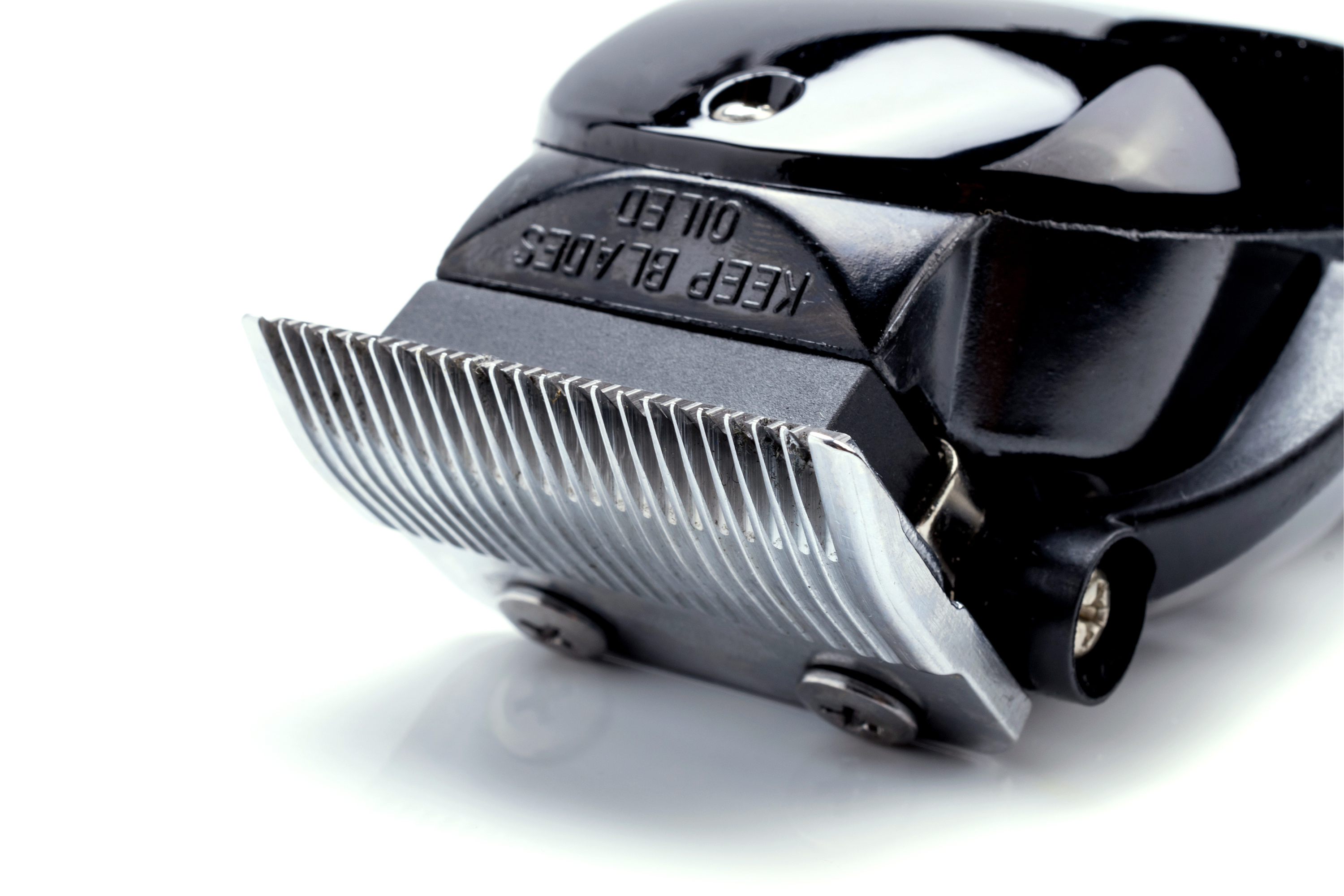Article: Mastering Precision Cuts: Techniques and Tricks Using Barber Clippers
Mastering Precision Cuts: Techniques and Tricks Using Barber Clippers
In the ever-evolving world of men's hairstyles, clipper cuts have always held a special place. From the military-inspired buzz cuts of the early 20th century to the intricate fades that grace magazine covers today, the ability to wield an electric clipper with precision is a craft that stands the test of time.
The modern man is no stranger to the allure of a well-executed clipper cut. In a world driven by aesthetics, where Instagram influencers and celebrities set the tone for fashion, the demand for sharp, meticulously crafted hairstyles is higher than ever. Enter the barber – an artist and technician rolled into one, armed with an electric clipper, ready to sculpt a masterpiece.
But why the resurgence? At its core, clipper cuts represent simplicity, elegance, and masculinity. They're versatile, ranging from the understated elegance of a crew cut to the audacious flair of a mohawk. They're also practical, often requiring less maintenance than longer hairstyles. But perhaps most importantly, in an age of individual expression, they offer countless variations, allowing one to craft a unique identity.
As we delve into the techniques and tricks that define modern clipper cuts, it's crucial to appreciate the rich tapestry of history, fashion, and science that underpins every snip and trim.
Understanding the Basics of Electric Clippers
The electric hair clipper, in many ways, is the barber's sword. Its design, mechanics, and functionality play a pivotal role in achieving the precision that today's hairstyles demand.
Historically, the transition from manual shears to electric clippers marked a significant leap in the world of barbering. No longer did barbers have to rely solely on hand techniques; the electric clipper introduced speed, consistency, and a new realm of possibilities.

At the heart of the clipper is its motor. Different motor types – rotary, magnetic, and pivot – cater to varied needs. Rotary motors, for instance, balance speed and power, making them ideal for bulk hair removal and intricate detailing. Magnetic motors, on the other hand, are known for their speed, perfect for wet hair types and fine textures. Pivot motors pack a punch in terms of power, adeptly handling thick, coily hair.
The blade, another critical component, defines the cut's precision. High-carbon stainless steel blades, with their durability and sharpness, are a popular choice. However, ceramic blades are gaining traction for their ability to stay cooler during extended use.

Then there's the world of attachments and guards. These tools, often overlooked, are crucial for achieving different lengths, transitions, and textures. A #1 guard, for example, is vastly different from a #4, not just in length but in the style and feel it imparts.
However, with great power comes great responsibility. Maintenance – regular cleaning, oiling, and blade sharpening – ensures the clipper's longevity and optimal performance. After all, even the most skilled barber is only as good as their tools.
The 10 Most Popular Men's Clipper Haircuts
1. The Buzz Cut
A symbol of simplicity and masculinity, the buzz cut has transcended time, gracing the heads of soldiers, celebrities, and athletes alike. Its appeal lies in its low maintenance and clean, uniform appearance.
Characteristics of the Classic Buzz Cut: At its core, the buzz cut is an even, super-short haircut, achieved using clippers without a guard or with a very short guard. The scalp is usually visible, making it a bold statement of confidence.
Step-by-Step Guide to Achieving a Uniform Buzz Cut:
- Preparation: Begin with clean, dry hair. Ensure the clipper is clean, oiled, and the chosen guard (if any) is securely attached.
- Cutting: Start at the forehead, moving the clipper back to the crown in smooth, consistent strokes. Follow the head's contour for an even cut.
- Sides and Back: Use upward strokes, starting from the neckline and moving upwards to blend with the top.
- Finishing: Check for any uneven patches. Use a mirror to inspect the back.
Common Variations:
- Induction Cut: The shortest form of buzz cut, achieved without a guard.
- Burr Cut: Slightly longer than the induction, usually done with a #1 or #2 guard.
Despite its simplicity, the buzz cut offers variations and can be tailored to fit different head shapes and facial features.
2. The Crew Cut
Bridging the gap between formal and casual, the crew cut is a timeless classic that exudes sophistication and style.
Identifying the Key Elements of a Crew Cut: Characterized by shorter sides and back with a bit of length on top, the crew cut offers a gradient of lengths, adding depth and dimension.
Techniques for Blending and Tapering the Sides and Back:
- Preparation: As always, start with clean, dry hair. Choose the appropriate guards for the desired length.
- Sides: Begin with a longer guard, moving the clipper upwards and flicking out as you reach the head's curve. This creates a seamless blend.
- Back: Use the same technique, ensuring the gradient matches the sides.
- Top: Switch to a longer guard, cutting the hair to the desired length, with the front slightly longer than the back. This creates a subtle pomp effect.
Styling Tips for the Top:
- For a textured look, use a matte pomade or clay.
- For a sleeker appearance, a light gel or wax works wonders.
The crew cut's adaptability makes it suitable for various settings, from boardrooms to beaches. Its versatility in styling ensures it remains a favorite, decade after decade.
3. The Undercut
Daring and distinct, the undercut stands out with its sharp contrast between the voluminous top and ultra-short sides and back.
Characteristics of the Modern Undercut: The key feature is the absence of a fade or transition between the top and the sides. Instead, there's a stark demarcation, lending an edgy appearance.
Achieving Sharp Contrasts:
- Preparation: Start with clean, damp hair for better control. Choose the right clipper guard for the sides, usually a #1 or #2.
- Sides and Back: Clip the sides and back uniformly, stopping distinctly where the top begins.
- Top: Keep the top longer, allowing for various styling possibilities. A scissor-over-comb technique can be used for refining.
Combining with Other Styles: The undercut serves as a versatile base.
- Slicked Back: A classic, using pomade to push the hair back.
- Pompadour Undercut: Incorporating volume and lift at the front.
- Messy Undercut: Perfect for a casual look, achieved with a texturizing product.
The undercut, with its audacious flair, is perfect for those looking to make a statement while offering enough versatility to tailor to individual tastes.
4. The Taper Fade
The epitome of modern barbering craftsmanship, the taper fade gracefully transitions from one length to another, adding depth and structure.
Differentiating Between Fades:
- Low Fade: Begins the fade just above the ears.
- Mid Fade: Starts the transition in the middle of the sides.
- High Fade: The fade begins near the top, creating a pronounced contrast.
Steps for a Seamless Fade Transition:
- Preparation: Clean hair ensures even cutting. Decide on the fade's starting point.
- Initial Guide: With a shorter guard (e.g., #1), create the first guideline where you want the fade to start.
- Blending: Switch to a longer guard (e.g., #2) and start blending above the initial guideline. Gradually change to longer guards as you move up, ensuring a smooth gradient.
- Top: Depending on the style, the top can be left longer or cropped short. Ensure it blends well with the highest point of the fade.
Tricks for Ensuring Evenness:
- Use a mirror to check the fade's consistency.
- Stretching the skin slightly can help in achieving a more even fade.
The taper fade, with its intricate gradients, showcases a barber's skill and attention to detail. It's adaptable, fitting seamlessly with various top styles, from pompadours to buzz cuts.
5. The Pompadour
An iconic hairstyle that dates back to the 18th century, the modern pompadour is a blend of old-school charm and contemporary flair.
Historical Significance of the Pompadour: Initially popularized by women in the 18th century, the pompadour was later adopted by men in the 1950s, with icons like Elvis Presley championing the look.
Techniques for Volume, Fade Integration, and Styling:
- Preparation: Begin with damp hair. The top needs significant length for this style, ideally 4 inches or more.
- Sides: Depending on preference, the sides can be faded or kept at a uniform length. A mid-fade often complements the pompadour's volume well.
- Top: Blow-dry while combing upwards and backwards to create volume. Use a round brush for added lift.
- Styling: Apply a strong-hold pomade or wax, pushing the hair back and sculpting the characteristic pompadour bulge.
Adapting the Pompadour: Modern variations include the pompadour fade, the short pompadour, and the curly pompadour.
The pompadour, with its blend of history and modernity, is a testament to the timeless appeal of voluminous hair, sculpted to perfection.

6. The Mohawk and Faux Hawk
A hairstyle that screams rebellion and individuality, the Mohawk and its more subdued sibling, the Faux Hawk, have been symbols of counterculture and fashion statements alike.
Tracing Back to Punk Roots: The Mohawk, with its shaved sides and central strip of long hair, has roots in various indigenous cultures but gained modern popularity with the punk movement in the 70s and 80s.
Crafting the Central Ridge and Blending the Sides:
- Preparation: The central hair strip needs length, while the sides can be clipped short or faded.
- Central Ridge: For a traditional Mohawk, the central hair is spiked upwards using strong-hold products.
- Sides: For a Mohawk, the sides are usually shaved clean. For a Faux Hawk, a fade or a shorter clip maintains some hair, making it less stark than its counterpart.
Modern Twists: The modern Mohawk often incorporates designs, color, and even braids. The Faux Hawk, being subtler, is versatile, suitable for both casual and semi-formal settings.
Both the Mohawk and Faux Hawk are embodiments of self-expression, allowing wearers to make bold statements and showcase their unique personalities.
7. The Hard Part
The hard part, also known as the razor line or side part line, is a modern addition to various hairstyles, offering a touch of edge and definition.
The Defining Line: Achieving Precision and Sharpness:
- Preparation: Start with a basic haircut style, such as a comb-over, crew cut, or undercut.
- Marking the Line: Using a comb, create a side part where you want the hard part to be. This acts as a guide.
- Creating the Hard Part: Using a trimmer or clipper without a guard, carefully etch out the parting line. The line should be straight and distinct.
Integrating with Other Styles:
- Comb-Over with Hard Part: The line adds a modern twist to the classic comb-over.
- Side Part with Hard Part: Enhances the side part's visibility, adding contrast and edge.
The hard part, though simple, can transform a look, providing a contemporary touch to traditional styles.
8. The Ivy League
A refined cousin of the crew cut, the Ivy League haircut exudes class and sophistication, perfect for the modern gentleman.
Characteristics: The top is kept long enough to be parted, while the sides and back are tapered neatly.
Techniques for a Refined Finish:
- Preparation: Clean and damp hair ensures ease of cutting.
- Sides and Back: Use a medium guard (e.g., #3 or #4) for a uniform length, tapering slightly as you move down.
- Top: The front is the longest point, gradually decreasing in length towards the crown. This allows for the characteristic front "quiff."
- Styling: The top can be parted to the side, with the front slightly elevated for that signature look.
Modern Adaptations: Contemporary versions include combining the Ivy League with a fade or even a hard part.
With its elegant and versatile nature, the Ivy League is suitable for both professional settings and casual outings, making it a favorite among those seeking a balance between style and substance.
9. The Bald Fade
The bald fade, also known as the skin fade, stands out with its gradient transition from bare skin to hair, offering a sleek and edgy appearance.
Mastery in Gradient: From Skin to Hair:
- Preparation: Begin with clean hair, ensuring your clippers are ready with necessary guards.
- Initial Guide: Using the clipper without a guard, create the first guideline where you want the skin fade to begin.
- Blending: Gradually transition to longer guards as you move up the head, ensuring a seamless fade from skin to hair.
- Top: Depending on the style, the top can be kept long for a pompadour or comb-over look, or cropped short for a buzz cut appearance.
Pairing with Other Top Styles: The bald fade is versatile and can be combined with various top styles, from the spiky hair look to a more textured, messy finish.
The bald fade, with its clean and pronounced gradient, is perfect for those looking to make a bold statement, exuding confidence and style.
10. The Classic Comb Over
A timeless hairstyle, the comb-over has evolved from being a go-to style for those with thinning hair to a modern favorite embraced by men of all ages.
The Timeless Appeal: Traditionally, the comb-over was used to cover bald spots. Today, it's chosen for its neat, slick appearance and versatility.
Steps for Side Tapering and Top Styling:
- Preparation: Start with damp hair for better manageability.
- Sides: Choose a medium to short guard, tapering the sides to blend seamlessly with the top.
- Top: The hair should be long enough to comb to the side. Ensure even length, with the possibility of a slight increase towards the front for added volume.
- Styling: Use a medium-hold product to comb the hair to one side, ensuring a neat, slicked appearance.
Modern Variations: Today's comb-over integrates fades, hard parts, and even textured finishes to add a contemporary touch to the classic.
The comb-over, with its adaptability and sophisticated charm, remains a staple in the world of men's hairstyles, proving that classics never truly go out of style.
With these detailed breakdowns, we've provided a comprehensive guide on mastering precision cuts for popular men's hairstyles using electric clippers. This article aims to be both instructional and insightful, catering to professional barbers and enthusiasts alike.
4. Essential Tricks and Tips for All Styles
While the techniques vary, certain universal tricks can elevate any haircut, ensuring a cleaner, more professional finish.
-
The Art of Blending: One of the marks of an expert barber is the ability to blend seamlessly. Whether it's a fade or transitioning from a short back and sides to a longer top, mastering the flick-out technique with your clippers ensures a gradient without harsh lines.
-
Handling Cowlicks and Hair Whorls: These natural hair growth patterns can be tricky. The key is to cut slightly longer in these areas, allowing the hair's natural direction to blend seamlessly with the rest of the cut.
-
Direction Matters: Always cut against the grain for a closer, even cut. This lifts the hair, allowing for a cleaner pass with the clippers.
-
Stay Cool: Clippers can heat up during prolonged use. Ensure you occasionally touch the blade to your forearm to check the temperature. Overheated blades can be uncomfortable for the client.
-
Maintenance is Key: Regular cleaning, oiling, and changing of blades ensure longevity and optimal performance. A sharp blade ensures clean cuts, reducing the chances of pulling or snagging.
In the realm of barbering, trends come and go, but the quest for precision, style, and mastery remains eternal. This journey through the most popular men's clipper hairstyles offers more than just techniques; it's a testament to the ever-evolving art of hairstyling.
The electric clipper, a tool once seen as purely functional, has become an instrument of creativity. With it, barbers sculpt, shape, and innovate, turning every haircut into a statement of individuality and style. From the audacious lines of the Mohawk to the refined elegance of the Ivy League, each style tells a story, a narrative of personal expression interwoven with cultural trends and historical influences.
But beyond the styles and techniques, at the heart of every great haircut is the relationship between the barber and the client. It's a dance of trust and expertise, where understanding, communication, and skill converge to create magic. As barbers, continual learning, adapting to new trends, and mastering the nuances of one's tools are the cornerstones of excellence.
In closing, while the electric clipper is but a tool, in the hands of a skilled barber, it becomes a wand, breathing life into visions, crafting masterpieces one cut at a time. In this dynamic world of hair artistry, the quest for perfection is unending, and the journey, as they say, is as beautiful as the destination.

